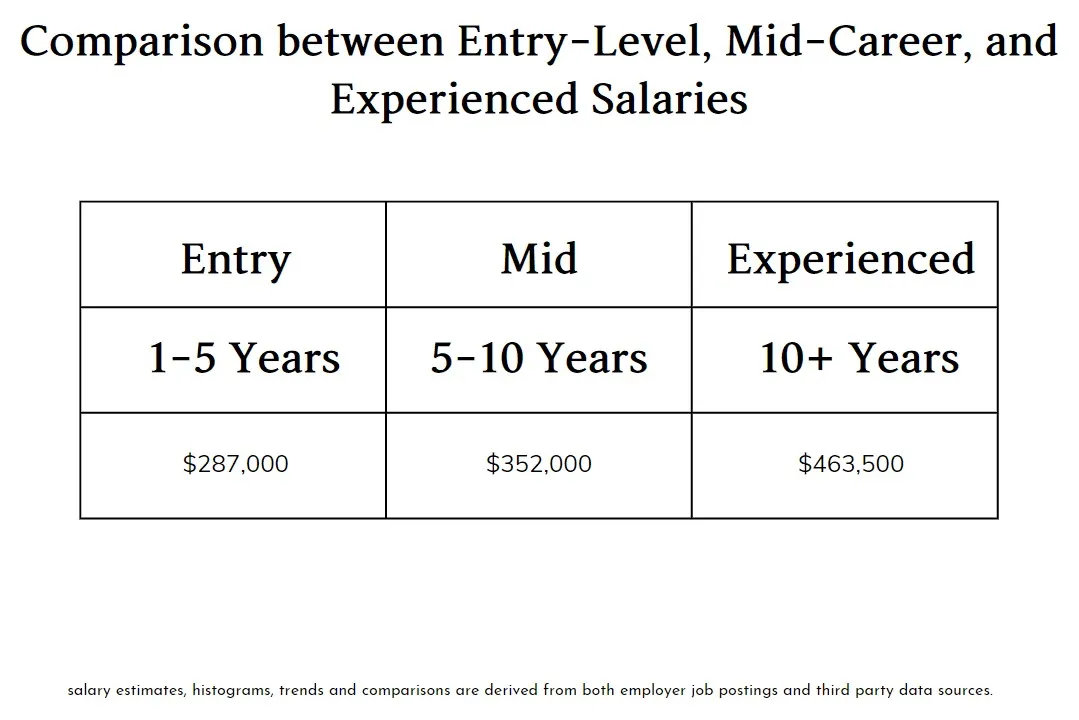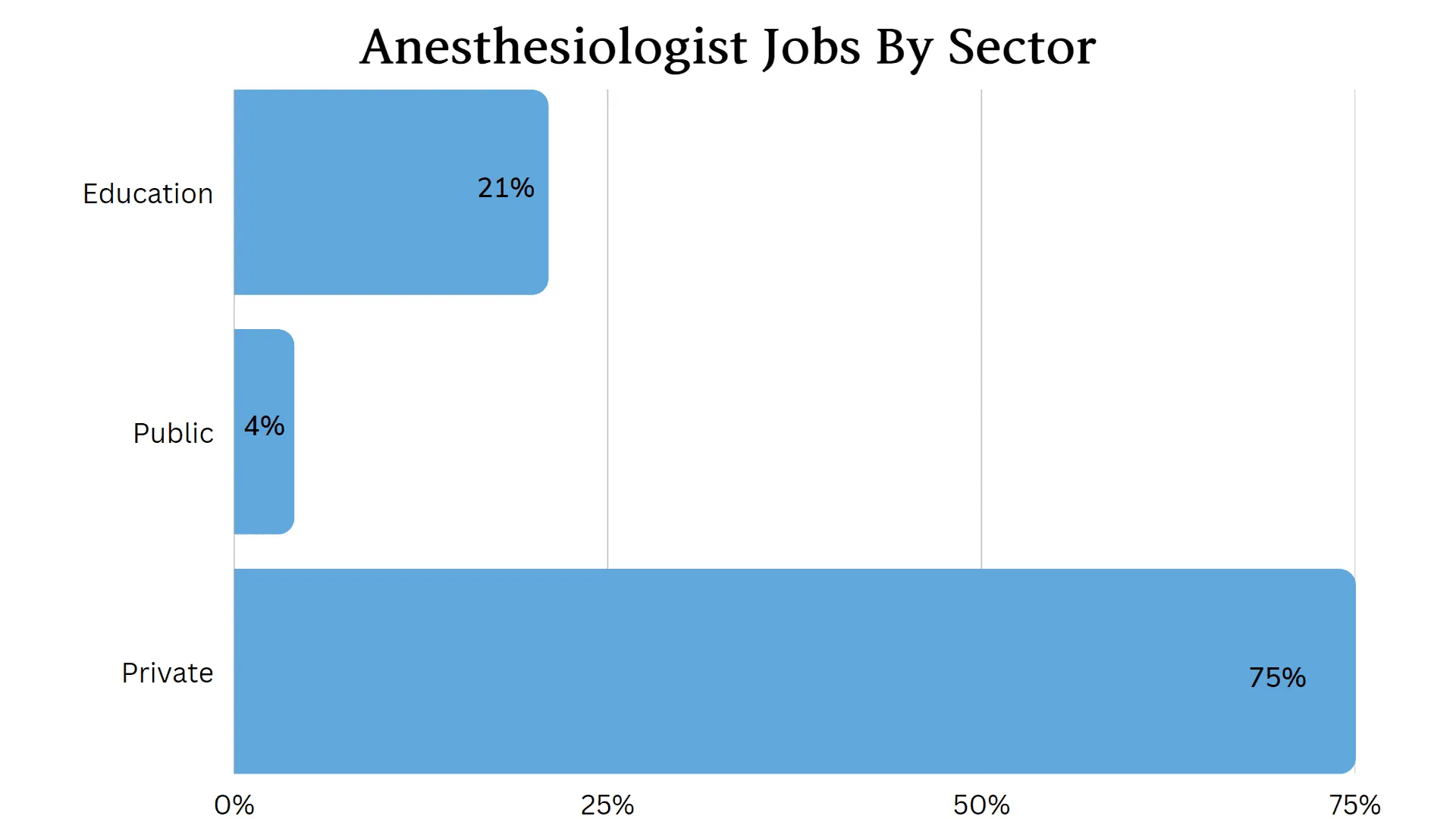Anesthesiologist Salary Evolution: Unveiling the Magnificant Journey of Compensation with Experience

Author: Tyesia Hunter
The Evolution of Anesthesiologist Compensation: Unveiling the Magnificent Journey of Salary Growth with Experience
The Unsung Heroes of the Operating Room
Picture this: a bustling operating room, surgeons in their scrubs, nurses prepared for action, and patients lying anxiously on the operating table. Amidst this controlled chaos stands an unsung hero—the anesthesiologist. Often overlooked in the spotlight that shines on surgeons and specialists, these skilled medical professionals play a crucial role in ensuring patient comfort and safety during surgical procedures.
Defining Anesthesiologists: Masters of Sedation and Pain Management
An anesthesiologist is a highly trained physician who specializes in administering anesthesia to patients before, during, or after surgery. They are experts at managing pain and sedating patients to ensure their comfort throughout various medical procedures.
Beyond just administering anesthesia, they closely monitor vital signs to ensure the patient's stability during surgery. Anesthesiologists possess extensive knowledge of pharmacology, physiology, and critical care medicine.
They work collaboratively with surgeons and other healthcare professionals to provide comprehensive patient care. From simple surgeries to complex life-saving procedures, these doctors are paramount in ensuring successful outcomes for patients.
The Vital Importance of Anesthesia
The importance of anesthesia cannot be overstated when it comes to modern medicine's progress. Imagine undergoing major surgery without the blissful oblivion that anesthesia provides—a nightmare scenario indeed! Anesthesia allows surgeons to perform intricate procedures while keeping patients comfortable and pain-free.
Beyond pain management, anesthesiologists have a broader responsibility: they safeguard patients' well-being throughout surgeries by closely monitoring crucial factors such as blood pressure, heart rate, oxygen levels, and body temperature. By expertly adjusting medications as needed during surgery or responding swiftly to any complications that arise unexpectedly—such as adverse reactions or changes in vital signs—they ensure optimal patient safety at all times.
Without anesthesia specialists, the realm of surgery would be a perilous and traumatic experience. Their expertise, dedication, and ability to adapt in high-pressure situations make them an indispensable part of any surgical team.
Anesthesiologist Salary Overview
Unlocking the Mystery of Anesthesiologist Salaries
When it comes to discussing anesthesiologist salaries, there is a wide range to consider. On average, anesthesiologists earn a lucrative income, making them one of the highest-paid medical professionals.
However, it's important to note that various factors influence salary variations within this field. These factors can have a significant impact on an individual's earning potential and overall compensation.
The Numbers Game: Average Salary Range for Anesthesiologists
Anesthesia is a specialized field that requires extensive education, training, and expertise. As a result, anesthesiologists are generously compensated for their vital role in patient care.
On average, the salary range for anesthesiologists falls between $300,000 and $600,000 per year. However, it's worth mentioning that this range can vary significantly depending on several crucial factors.
Cracking the Code: Factors Influencing Salary Variations
Several key elements come into play when determining an individual's salary as an anesthesiologist. One primary factor is experience level and years of practice.
An entry-level or junior anesthesiologist will typically start at a lower salary range within the national average but can expect gradual increases with each passing year as they gain more experience and expertise. Other influential factors include geographic location and type of practice setting.
Metropolitan areas with higher costs of living tend to offer higher salaries to compensate for the increased expenses faced by healthcare professionals working in those regions. Additionally, practicing in academic or private settings can also impact earning potential.
It's essential to recognize that while these factors play a role in determining salaries, ultimately individual negotiation skills also come into play when securing contracts or accepting positions within healthcare organizations. Remember that these figures are only averages and serve as a general guideline.
Various exceptional circumstances and unique career paths can result in salaries both above and below the average range. The key lies in understanding the factors at play and making informed decisions to ensure satisfactory compensation within the dynamic field of anesthesiology.
Read: Factors Affecting Anesthesiologist Salary: Exploring Key Determinants
Starting Salary for Entry-Level Anesthesiologists
Average starting salary for new anesthesiologists
When it comes to embarking on a career as an anesthesiologist, the starting salary can be a significant point of interest. After years of rigorous education and training, budding anesthesiologists eagerly anticipate their first paycheck.
On average, the starting salary for entry-level anesthesiologists typically falls within the range of $250,000 to $350,000 per year. However, it is important to note that this figure can vary depending on various factors.

Factors affecting initial compensation
Several factors come into play when determining the initial compensation for entry-level anesthesiologists. First and foremost is the geographical location where they choose to practice.
Metropolitan areas tend to offer higher salaries due to increased demand and cost of living. In contrast, smaller towns or rural areas may have lower compensation packages.
Another crucial factor impacting initial pay is whether one chooses academic or private practice settings. Academic institutions often provide lower starting salaries but offer valuable opportunities for research and teaching engagements that can enhance long-term career prospects.
On the other hand, private practice settings may provide higher initial salaries but may lack some of the academic benefits. Additionally, past experiences and achievements during medical school and residency can influence starting pay.
Research publications or recognition in specialized areas might make candidates more competitive and potentially command a higher salary negotiation power. Overall, while there is a general range for starting salaries in this field, it's important to consider these influencing factors as they significantly shape an entry-level anesthesiologist's initial compensation package.
Read: Entry-Level Anesthesiologist Salary: Exploring Compensation
Early Career Growth and Salary Milestones
Setting the Stage for Success: The First Few Years After Residency Completion
Entering the world of anesthesiology can be both exhilarating and challenging for newly-minted anesthesiologists. As they embark on their careers, these early years are crucial in establishing a solid foundation for future growth.
Fresh out of residency, anesthesiologists generally start with a respectable salary that reflects their expertise and rigorous training. However, it is important to note that compensation can vary depending on factors such as location, practice setting, and demand-supply dynamics.
The Power of Specialization or Subspecialization
One significant factor influencing salary growth during the early career phase is specialization or subspecialization within the field of anesthesiology. By focusing on a specific area like pediatric anesthesia, obstetrics anesthesia, or pain management, anesthesiologists can garner expertise that sets them apart from their peers.
This specialized knowledge not only allows them to provide superior patient care but also opens doors to higher-paying opportunities. As they gain experience in their chosen field of specialization, their unique skill set becomes increasingly valuable in the job market.
Mid-Career Salary Progression
Climbing the Ladder: Factors Contributing to Increased Compensation
As anesthesiologists progress through their careers and accumulate experience, they often witness a gradual increase in compensation. Mid-career brings with it greater responsibility and expanded roles within healthcare teams.
Anesthesiologists who demonstrate exceptional skills may find themselves taking on leadership positions or administrative roles within hospitals or healthcare organizations. These added responsibilities come hand-in-hand with higher pay scales as recognition of their expertise and contribution to patient care.
Unlocking Opportunities: Leadership Roles and Higher Pay
One notable aspect of mid-career growth is the potential for anesthesiologists to assume leadership roles. By becoming department heads, medical directors, or even partners in a practice, these professionals can enjoy enhanced compensation packages.
Leadership positions not only provide higher pay but also offer avenues for professional development and influence within the field. Additionally, mid-career anesthesiologists may have opportunities to engage in research or contribute to academic publications, further bolstering their reputation and earning potential.
Read: Mid-Career Anesthesiologist Salary: Analyzing Earnings
Late Career Earnings Potential
From Expert to Trailblazer: Impact of Experience and Expertise on Income
With years of experience under their belts, late-career anesthesiologists possess a wealth of knowledge that becomes invaluable in terms of income potential. Their seasoned expertise allows them to navigate complex medical situations with confidence, ensuring patient safety during complex surgeries or critical care scenarios. As they become well-respected authorities within their profession, these anesthesiologists can command higher fees for consultations or specialized procedures.
Academic vs Private Practice Settings: Considerations for Late Career
Late-career anesthesiologists often face a pivotal decision regarding their practice setting: academic institutions or private practices. Academic settings provide opportunities for teaching and research while offering stability through regular salaries and benefits packages. On the other hand, private practices allow greater autonomy and potentially higher earnings through fee-for-service models or partnership arrangements.
Making this choice requires careful consideration of personal preferences, work-life balance goals, and financial aspirations. Early career growth lays the foundation for success as newly-trained anesthesiologists embark on their professional journeys.
Specialization within the field allows them to stand out and open doors to higher-paying opportunities throughout their careers. Mid-career progression brings increased responsibility along with leadership roles that offer both professional development and higher compensation packages.
Late career earnings are influenced by accumulated experience and expertise as well as decisions regarding practice settings. The journey of an anesthesiologist's salary evolution is a testament to their dedication, skill, and commitment to the well-being of their patients.
Salary Comparison: Academic vs Private Practice Settings
Differences in compensation structures between academic and private practice settings
When considering employment as an anesthesiologist, it's important to understand the contrasting compensation structures between academic and private practice settings. In academic institutions such as medical schools or teaching hospitals, anesthesiologists often receive a fixed salary that is determined by their level of experience and academic rank.
This means that regardless of the number of hours worked or patient encounters, their income remains consistent. On the other hand, in private practice settings, anesthesiologists commonly earn a combination of base salary and additional income tied to productivity measures like the number of cases completed or revenue generated.
In academic settings, the fixed salary structure provides stability for anesthesiologists since their income doesn't fluctuate based on patient volume or surgical schedule variations. However, it can also be limiting since there may be less opportunity for significant financial growth compared to private practice.
Conversely, in private practice settings, where compensation is often linked to productivity, there exists the potential for higher earnings based on factors like case complexity and efficiency. This performance-driven model can translate into greater financial rewards for highly productive anesthesiologists who prioritize increasing caseloads and optimizing patient outcomes.

Pros and cons of each setting in terms of earning potential
Choosing between academic and private practice settings requires careful consideration of their respective pros and cons related to earning potential.
Academic Setting:
Pros: - Stability: Anesthesiologists working in academia generally enjoy a stable income regardless of case volume fluctuations.
- Teaching Opportunities: Academic settings provide ample opportunities for involvement in teaching medical students or residents.
- Research Opportunities: Anesthesiologists can often engage in research projects through collaboration with other academics.
Cons:- Limited Financial Growth: Fixed salaries may restrict significant increases over time compared to private practice.
- Less Flexibility: Academic positions often come with more rigid schedules and less control over work hours.
Private Practice Setting:
Pros: - Earning Potential: Private practice anesthesiologists have the potential to earn higher incomes due to productivity-based compensation models.
- Autonomy: Private practice offers greater flexibility in terms of work schedules and patient management.
- Business Opportunities: In private practice, anesthesiologists can explore entrepreneurial options, such as starting their own anesthesia groups or clinics.
Cons: - Financial Uncertainty: Income may vary based on case volume, payer mix, and economic factors, leading to potential income fluctuations.
- Administrative Responsibilities: Private practice anesthesiologists often shoulder additional administrative duties that accompany the running of a business. The choice between academic and private practice settings for anesthesiologists has significant implications for earning potential.
While academic settings offer stability and opportunities for teaching and research, private practice settings may provide greater financial rewards due to productivity-based compensation structures. Ultimately, personal preferences regarding work-life balance, autonomy, and long-term financial goals will influence the decision-making process.
Additional Factors Influencing Anesthesiologist Compensation
Geographical Location: The Map to Earnings
When it comes to anesthesiologist compensation, one cannot overlook the significant impact of geographical location. The old saying, "Location, location, location" doesn't just apply to real estate; it holds true for medical professionals as well.
Different regions and states offer varying salary ranges that can greatly affect an anesthesiologist's earning potential. In general, metropolitan areas and bustling cities tend to offer higher salaries due to the increased demand for healthcare services and the higher cost of living.

For instance, if you have your heart set on practicing in New York City or Los Angeles, expect a considerably higher salary compared to a smaller town or rural area. However, keep in mind that these urban areas often come with a corresponding increase in living expenses.
On the other hand, rural locations might not offer the same level of compensation but often provide other benefits such as a lower cost of living and a more relaxed lifestyle. It's essential for aspiring anesthesiologists to carefully consider their preferred practice locations and how they align with their financial goals and personal preferences.
Conclusion: Navigating Your Anesthesiology Journey
As we wrap up this journey through the intricacies of anesthesiologist salary evolution over time, it's clear that numerous factors influence compensation levels. From years of experience and specialization choices to practice settings and geographical location - each plays a pivotal role in shaping an anesthesiologist's income trajectory.
It is important for aspiring anesthesiologists not only to be passionate about their profession but also informed about these key factors when making career decisions. By understanding how compensation evolves over time and considering various influencing elements wisely, one can navigate their way towards financial success while enjoying the unique challenges this noble field presents.
Remember that perseverance pays off. With dedication, hard work, and the right mindset, anesthesiologists have the opportunity to not only earn a comfortable living but also make a significant impact on patients' lives.
So, go forth with confidence and embrace the path that lies ahead. Your future as an esteemed anesthesiologist awaits!
__________________________________________________________________________________
Are you ready for your next career move? Or are you looking for your next hire? Visit elitemedstaffing.com






